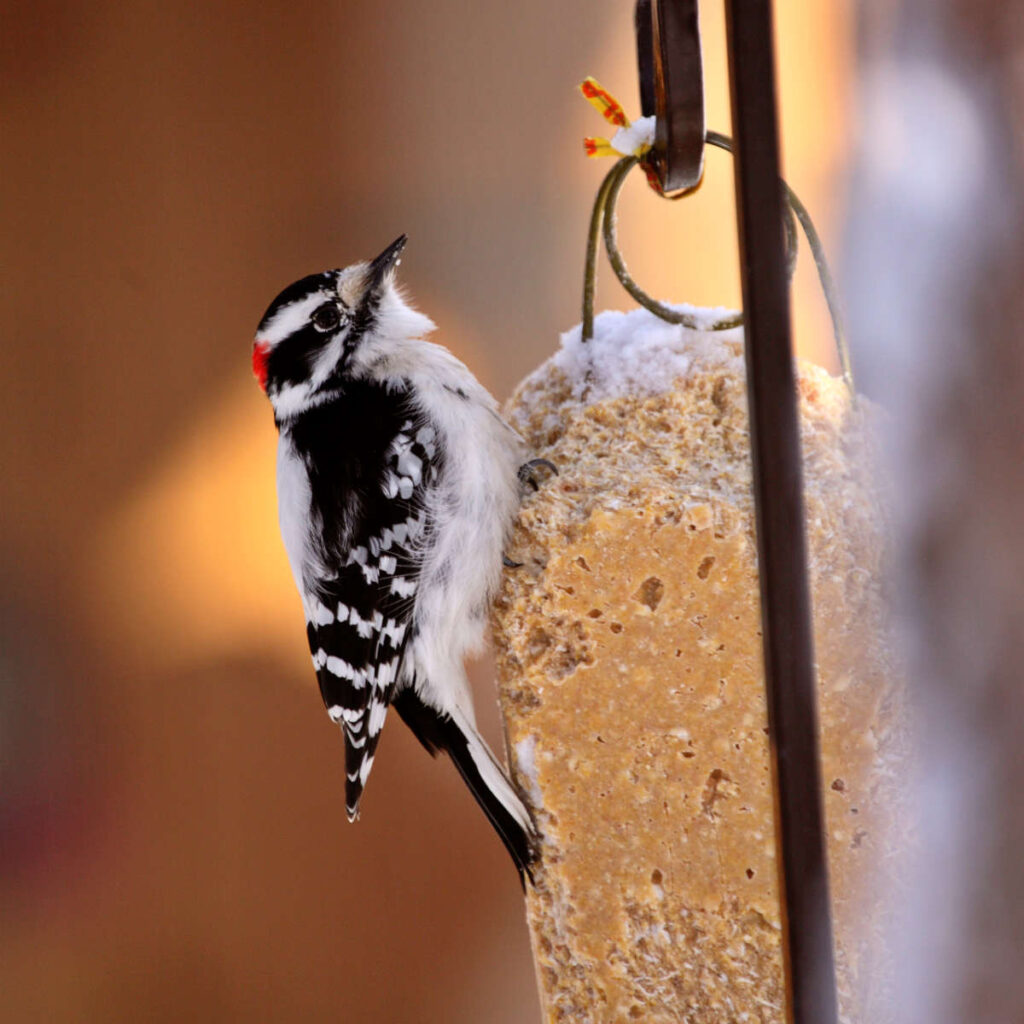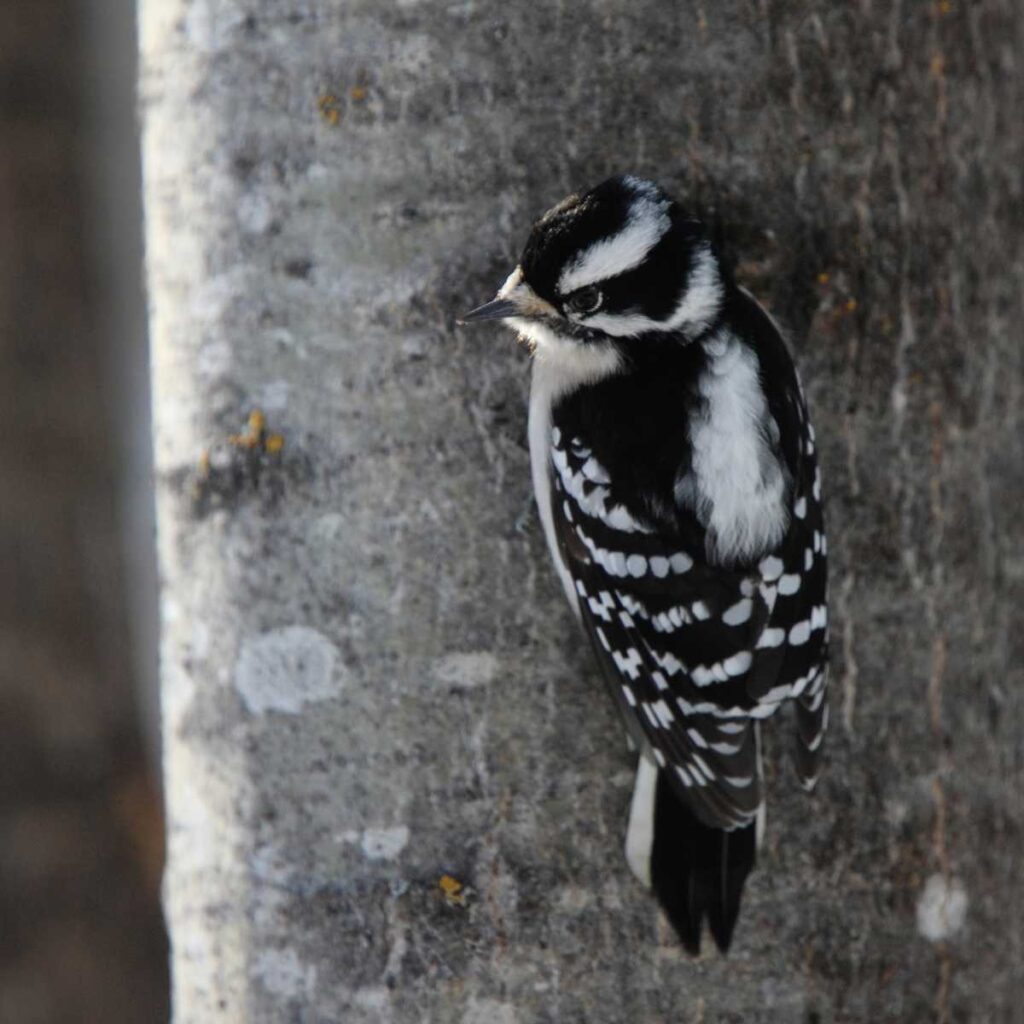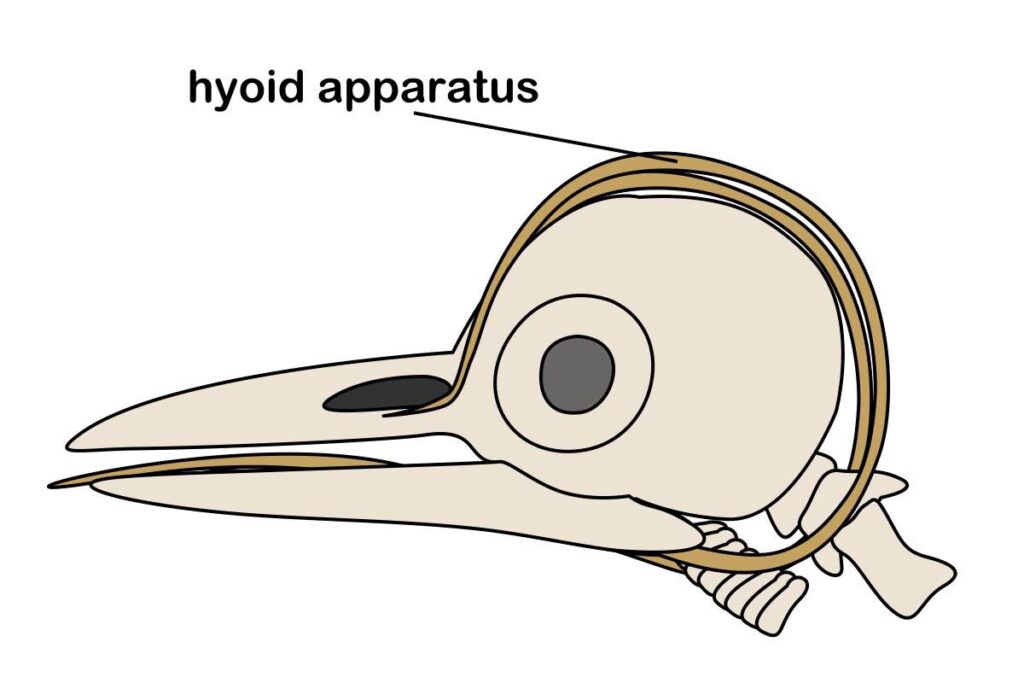Last Reviewed and Updated on March 2, 2023
The Downy Woodpecker is a small bird native to North America. These birds are known for their distinctive drumming sounds, which they create by rapidly tapping their beaks against trees and other surfaces. But there’s more to these fascinating birds than just their drumming habits. Explore these interesting facts about the downy woodpecker, from their diet and habitat to their unique physical features and behaviors.

About Downy Woodpeckers
Downy woodpeckers (Dryobates pubescens, Picoides pubescens, or Dendrocopos pubescens) are small, black-and-white woodpeckers found in forests, woodlands, and suburban areas throughout North America.
They have black upper parts and wings, which also have white spots. Their underside, belly, and head are white. The tail is black with white outer feathers. Males have a small red patch on the back of their heads; juveniles have a red cap.
The diet of downy woodpeckers consists mainly of insects, especially beetles, ants, and caterpillars, but they also eat seeds and fruits.
Downy woodpeckers breed from late winter to early spring, typically laying 3-8 eggs in a nest cavity. The eggs hatch after about two weeks.
Interesting Facts About the Downy Woodpecker
Whether you’re a birdwatcher or just curious about the natural world around you, these facts about the downy woodpeckers are sure to fascinate and educate. So let’s dive in and learn more about this charismatic little bird!

1. They are the smallest woodpeckers in North America
They are the smallest woodpecker species in North America, with adults typically measuring 5.5-7 inches 14-18 cm in length and weighing about 0.71 to 1.16 oz / 20 to 33 g.
There are many smaller species of woodpeckers around the globe though, especially the piculets.
2. Downy woodpeckers are cavity nesters
Cavity nesters construct their nests by excavating a cavity in a tree trunk or branch using their strong beaks. They can also use existing cavities that were made by other animals.
The cavities are about a foot (30 cm) deep from the entrance.
3. They will eat from bird feeders
Not all woodpeckers are keen on bird feeders, but downy woodpeckers eat a variety of foods and will visit bird feeders.
4. Downy woodpeckers can fly upside down
Most birds can occasionally be upside down in the air, but most of them can’t actually fly upside down. Woodpeckers, downy woodpeckers included, have the ability to fly upside down when they need too.
5. Males and females have different foraging ranges in the winter
Males have better foraging spots than females do. The most likely explanation for this behavior is the females avoiding the males (study on feeding behaviors).
6. They drum instead of singing
Downy woodpeckers don’t sing complex songs. They use drumming as a form of nonvocal communication. Each species has a unique drumming pattern, similar to how songbirds have their unique songs.
They do make simple vocalization calls as well. Downy woodpeckers produce brief, high-pitched notes, whistles, chatters, screams…
7. They eat food that larger woodpeckers can’t
Their small size is advantageous to them as the downy woodpecker can forage for food in places other larger woodpeckers can’t. Their small size and weight allow them to pick insects from a variety of flowers.
8. Downy woodpeckers have zygodactyl feet
Zygodactyly is an arrangement of digits (fingers) in some birds and chameleons, where two toes are facing forward, and two are facing back.
This type of digit arrangement is typical for species that spend most of their time on trees (arboreal) and climb trees, such as parrots, cuckoos, and some owls (besides woodpeckers).
9. They have a “shock absorber” bone

The hyoid bone plays an important role in a speech in humans and swallowing, as well as in the positioning and movement of the tongue. It is not directly attached to any other bone in the body. This bone is present in many animal species.
In woodpeckers, the hyoid bone is extremely elongated; it runs from the nose and wraps itself around the brain case. It minimizes the forces of repeated pecking.
